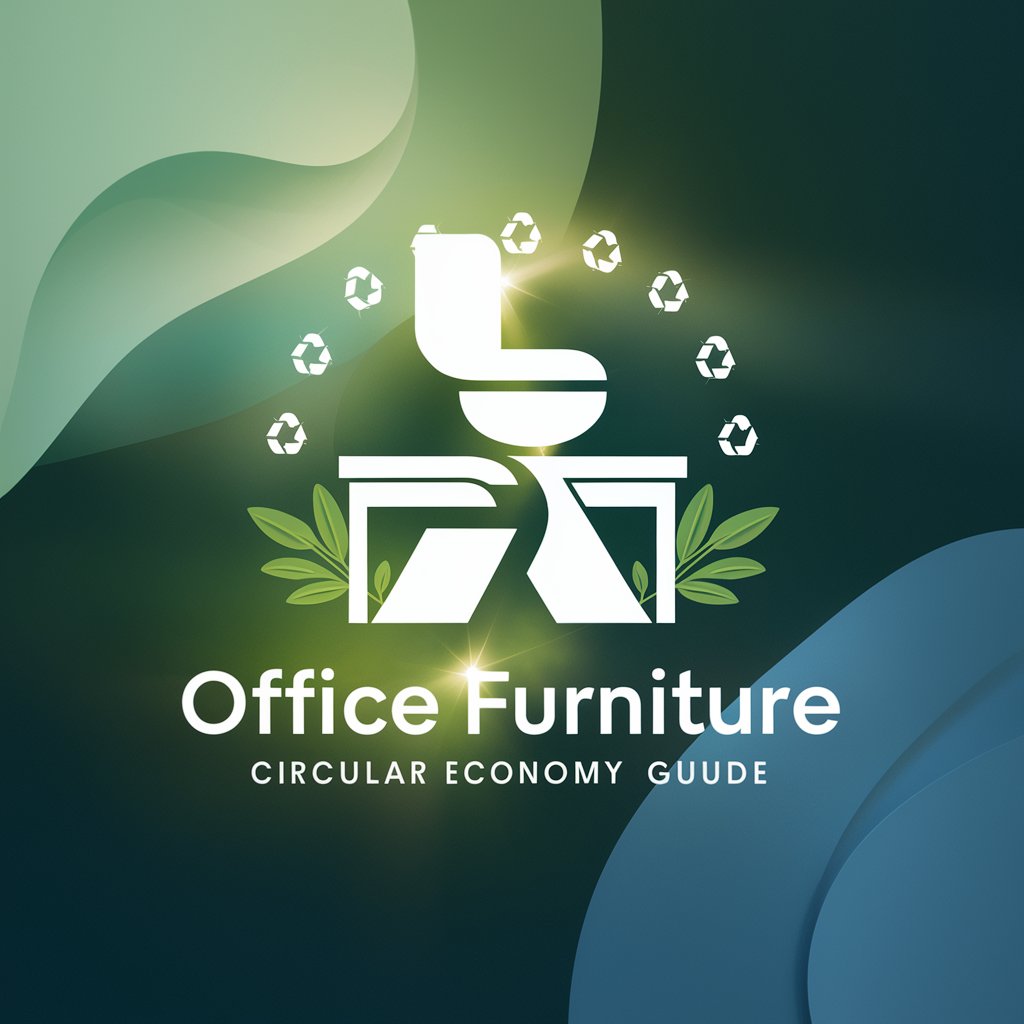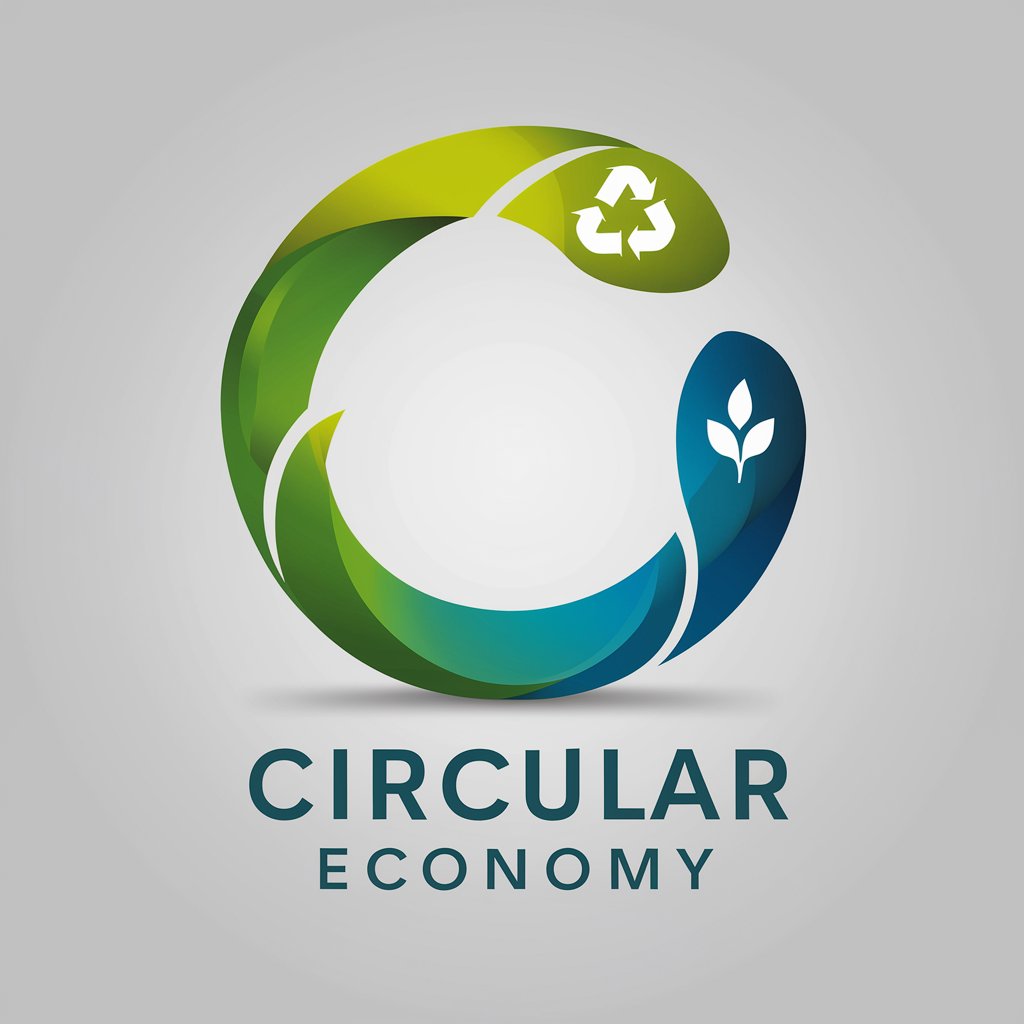
Office Furniture Circular Economy Guide - Eco-Friendly Office Furniture Guide

Welcome! Let's explore sustainable office furniture practices together.
Empower your office with sustainable furniture choices.
How can businesses implement sustainable practices in their office furniture choices?
What are the benefits of recycling and reusing office furniture?
Can you explain the concept of a circular economy in the context of office furniture?
What should I consider when choosing eco-friendly office furniture?
Get Embed Code
Understanding the Office Furniture Circular Economy Guide
The Office Furniture Circular Economy Guide serves as an educational platform dedicated to illuminating the environmental impacts of office furniture and promoting sustainable practices within workplaces. Its primary goal is to foster a circular economy in the office furniture industry, a system that emphasizes maximizing resource efficiency and sustainability through actions like sharing, leasing, reusing, repairing, refurbishing, and recycling. For instance, understanding the significant carbon footprint reduction achievable by opting for refurbished chairs instead of new ones, which is akin to reducing the emissions from driving an average petrol car for approximately 183 miles, exemplifies the type of insights the guide aims to provide. This approach not only conserves valuable resources and reduces waste but also offers businesses opportunities for cost savings and contributes to a healthier planet. Powered by ChatGPT-4o。

Core Functions of the Office Furniture Circular Economy Guide
Educational Outreach
Example
The guide provides detailed explanations of key terms like 'Circular Economy', 'Design for Disassembly', and 'Extended Producer Responsibility', fostering a deeper understanding of sustainable practices.
Scenario
Businesses seeking to adopt greener practices can use the guide to educate their teams about the importance of sustainability in the workplace, enabling more informed decisions about furniture procurement and disposal.
Promotion of Sustainable Practices
Example
Offering advice on how to extend the life of office furniture through methods such as refurbishing and repurposing, and showcasing the environmental benefits of these practices.
Scenario
An office manager looking to update the workplace environment consults the guide for tips on refurbishing current furniture instead of buying new, discovering cost-effective and eco-friendly solutions.
Advocacy for Zero Waste Initiatives
Example
Highlighting successful zero landfill office clearance services and the benefits of recycling and donating used office furniture.
Scenario
A company planning an office clear-out uses the guide to find services that will help them avoid sending old furniture to landfill, supporting their corporate sustainability goals.
Who Benefits from the Office Furniture Circular Economy Guide?
Business Leaders and Office Managers
Individuals responsible for the procurement and management of office assets find value in the guide's sustainable practices, aiding them in making decisions that align with corporate social responsibility (CSR) goals and reducing operational costs.
Environmental Advocates
People passionate about environmental conservation use the guide to stay informed about sustainable office furniture practices and to advocate for changes within their organizations or industries.
Furniture Manufacturers and Retailers
Companies in the furniture industry can benefit from understanding and integrating circular economy principles into their products and business models, improving sustainability and appealing to eco-conscious consumers.

How to Use the Office Furniture Circular Economy Guide
Start Your Journey
Begin by exploring yeschat.ai for a complimentary trial that requires no sign-up or ChatGPT Plus subscription.
Understand Circular Economy Terms
Familiarize yourself with key circular economy terms such as 'Circular Economy', 'Cradle to Cradle', and 'Design for Disassembly' to grasp the full scope of sustainable office furniture practices.
Identify Opportunities
Use the guide to identify opportunities for reusing, refurbishing, or recycling office furniture within your organization, thereby reducing your carbon footprint and promoting sustainability.
Implement Sustainable Practices
Implement the strategies recommended in the guide for purchasing eco-friendly furniture and managing end-of-life furniture responsibly to contribute to a greener office environment.
Measure Impact
Leverage the guide's insights to measure and communicate the environmental impact of your sustainable office furniture initiatives, setting benchmarks for continuous improvement.
Try other advanced and practical GPTs
VolatoGPT
Elevate Your Travel with AI

Vue TSX Mentor
Empower Vue with TypeScript & TSX

Web Analyzer
AI-Powered Web Insight Generation

万能助手
Empower Your Ideas with AI

DiscordGPT
AI-powered insights into Discord chats

GeoGPT
Discover the world with AI-powered precision.

Sommelier
AI-Powered Wine and Food Harmony

Sommelier
Elevate your wine journey with AI-powered expertise.

Sommelier
AI-powered wine connoisseur

Sommelier
Enhancing Your Wine Journey with AI

Sommelier
Elevate Your Wine Experience with AI

Sommelier
AI-Powered Wine and Food Harmony

Q&A on Using Office Furniture Circular Economy Guide
What is the Circular Economy, and how does it relate to office furniture?
The Circular Economy is an economic system that minimizes waste and maximizes the use of resources. In the context of office furniture, it involves extending the lifecycle of products through sharing, leasing, reusing, repairing, refurbishing, and recycling, to reduce environmental impacts.
How can I reduce my office's carbon footprint with this guide?
By following the guide's recommendations on reusing, refurbishing, and recycling office furniture, you can significantly lower the carbon emissions associated with producing new furniture, thus reducing your office's overall carbon footprint.
What are some examples of sustainable office furniture practices?
Sustainable practices include purchasing furniture made from recycled or renewable materials, opting for furniture designed for disassembly and future recycling, implementing take-back schemes for used furniture, and choosing refurbishment over replacement.
Can refurbishing office furniture really save money?
Yes, refurbishing existing office furniture can be considerably more cost-effective than purchasing new items. It not only extends the life of the furniture but also reduces waste and the demand for new resources, offering both economic and environmental benefits.
How does the guide help in planning for a sustainable office environment?
The guide offers strategies and insights on assessing current office furniture for its potential to be reused or refurbished, choosing eco-friendly materials and products, and partnering with professionals to ensure sustainability goals are met efficiently and effectively.





